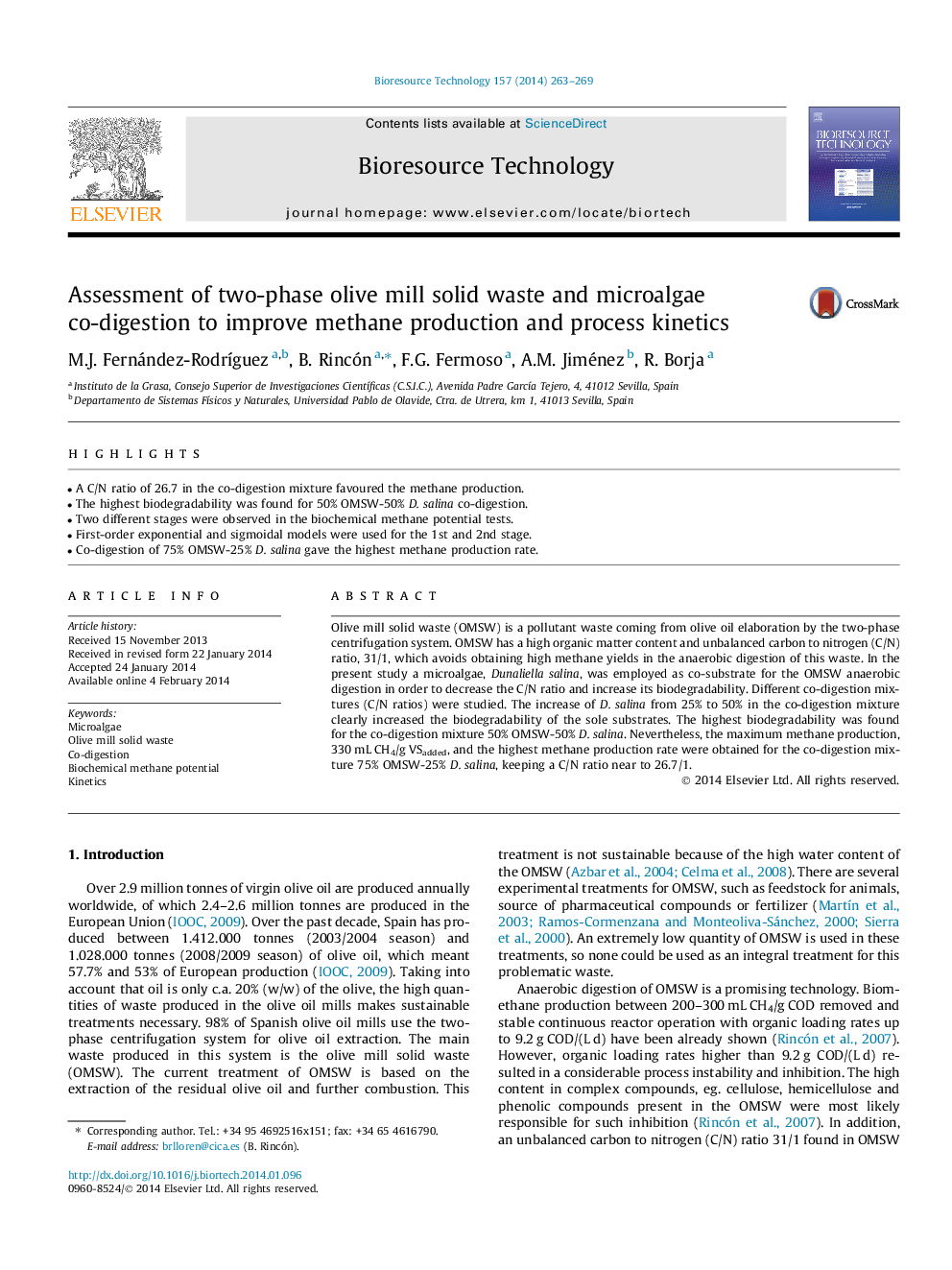| کد مقاله | کد نشریه | سال انتشار | مقاله انگلیسی | نسخه تمام متن |
|---|---|---|---|---|
| 680912 | 1459986 | 2014 | 7 صفحه PDF | دانلود رایگان |
• A C/N ratio of 26.7 in the co-digestion mixture favoured the methane production.
• The highest biodegradability was found for 50% OMSW-50% D. salina co-digestion.
• Two different stages were observed in the biochemical methane potential tests.
• First-order exponential and sigmoidal models were used for the 1st and 2nd stage.
• Co-digestion of 75% OMSW-25% D. salina gave the highest methane production rate.
Olive mill solid waste (OMSW) is a pollutant waste coming from olive oil elaboration by the two-phase centrifugation system. OMSW has a high organic matter content and unbalanced carbon to nitrogen (C/N) ratio, 31/1, which avoids obtaining high methane yields in the anaerobic digestion of this waste. In the present study a microalgae, Dunaliella salina, was employed as co-substrate for the OMSW anaerobic digestion in order to decrease the C/N ratio and increase its biodegradability. Different co-digestion mixtures (C/N ratios) were studied. The increase of D. salina from 25% to 50% in the co-digestion mixture clearly increased the biodegradability of the sole substrates. The highest biodegradability was found for the co-digestion mixture 50% OMSW-50% D. salina. Nevertheless, the maximum methane production, 330 mL CH4/g VSadded, and the highest methane production rate were obtained for the co-digestion mixture 75% OMSW-25% D. salina, keeping a C/N ratio near to 26.7/1.
Journal: Bioresource Technology - Volume 157, April 2014, Pages 263–269
